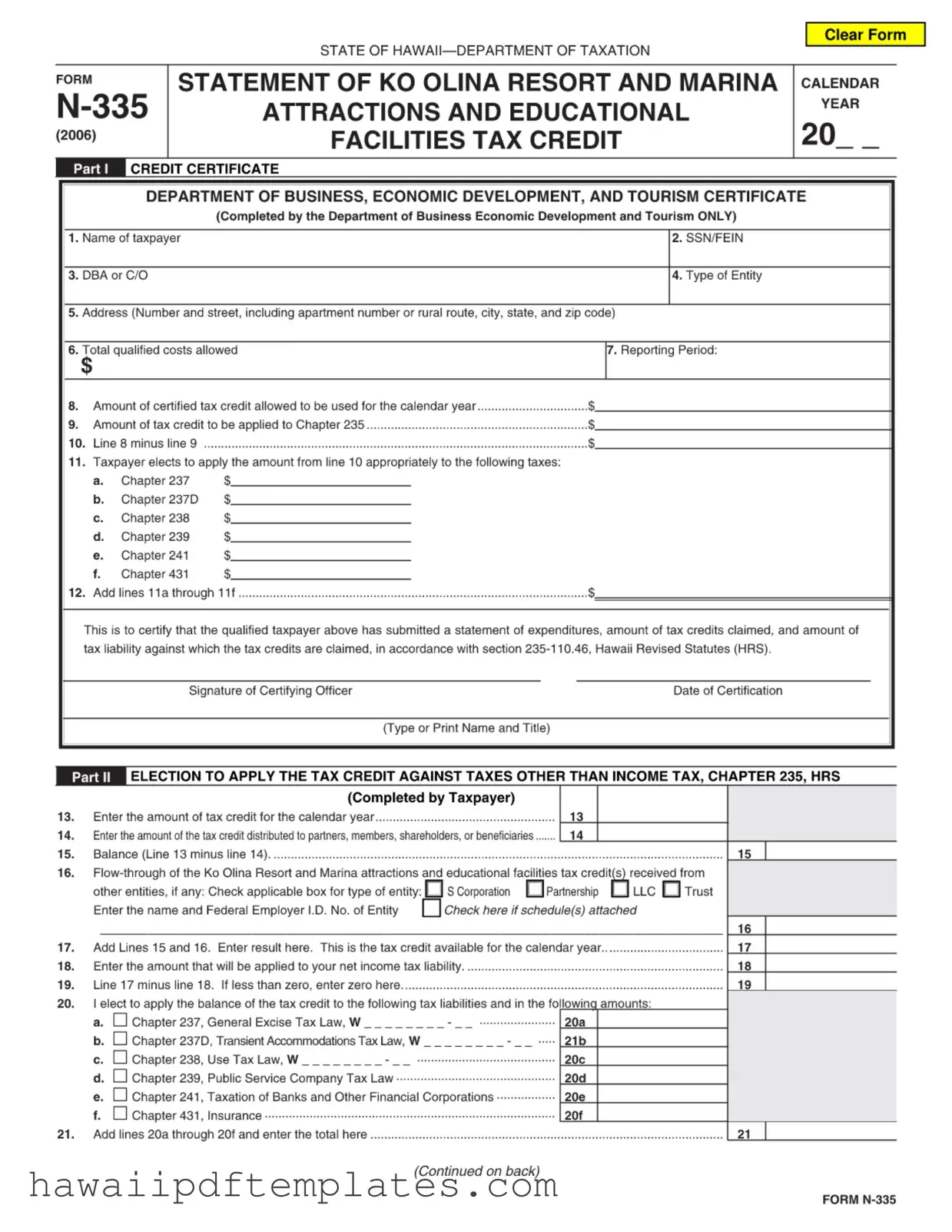Hawaii N 335 PDF Form
The Hawaii N-335 form is a crucial document used to claim the Ko Olina Resort and Marina Attractions and Educational Facilities Tax Credit. This form helps taxpayers report qualified costs and the amount of tax credits they can apply against various tax liabilities. If you’re ready to take advantage of this tax credit, fill out the form by clicking the button below.
Customize Form Online
